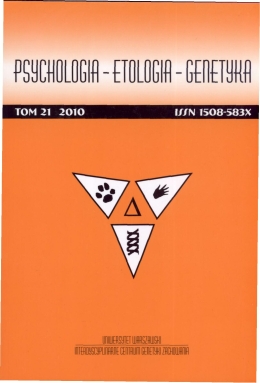FUNKCJE WYKONAWCZE PO UDARZE MÓZGU W ŚWIETLE DANYCH TESTOWYCH I NEUROOBRAZOWYCH
EXECUTIVE FUNCTIONS AFTER STROKE IN LIGHT OF THE TEST PARAMETERS AND NEUROIMAGING
Author(s): Daria Biechowska, Krzysztof Jodzio, Edyta Szurowska, Dariusz GąseckiSubject(s): Psychology
Published by: Wydawnictwo Naukowe Scholar Sp. z o.o.
Keywords: cerebral infarction stroke; disorders of self-programming; neuroanatomical correlates;
Summary/Abstract: Cerebral infarction stroke is the very common cause of executive dysfunctions, such as disorders of self-programming and inhibition of ongoing responses. The aim of this study was to determine neuroanatomical correlates (i.e. lesion location) of these dysfunctions in stroke patients. Thirty-eight patients who had ischemic stroke were examined for the purpose of this study. Subjects were divided into three anatomically-defined groups. The area of structural damage was limited entirely to the respective frontal (non-frontal) cortices. All brain lesions were verified by CT or MR scan at least three days post-stroke onset. Executive functions were measured by three standard methods: the Wisconsin Card Sorting Test (WCST), the Trail Making Test (TMT), and the Stroop Color-Word Test. Stroke patients manifested executive dysfunctions which were heterogeneous with respect to severity and their prevalence. The patients with frontal or subcortical lesions had more difficulties sorting card from the WCST than the patients with posterior cerebral lesions. Similarly, the frontal patients were inferior to those with posterior infarcts in the Stroop Test. Although the performance on TMT part B took more time than performance on part A, this discrepancy was particularly prominent after damage to the frontal or subcortical regions, which is believed to cause executive disorders. Although dysexecutive symptoms, such as a problem with the cognitive control processes, disinhibition and inability to switch of attention, were common in stroke patients, the most severe dysfunctions could be attributed to a cerebral ischemia located in frontal lobe and cortico-striato-thalamic loop.
Journal: Psychologia-Etologia-Genetyka
- Issue Year: 2010
- Issue No: 21
- Page Range: 7-25
- Page Count: 19
- Language: Polish
- Content File-PDF

